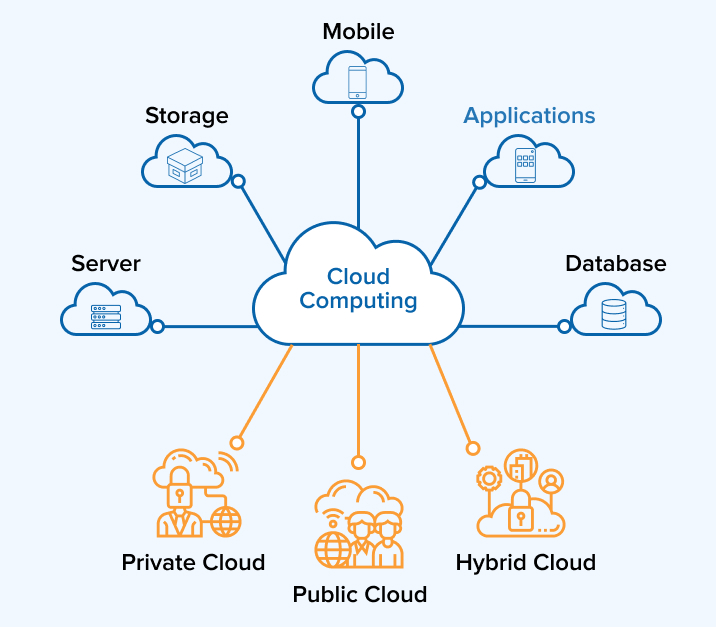Achieve Seamless Scalability With Cloud Solutions
In the ever-evolving landscape of cloud services, accomplishing smooth scalability stands as a foundation for contemporary services seeking to stay affordable and adaptable. The quest for seamless scalability with cloud services reveals a world of possibilities for those ready to welcome the transformative power of vibrant source administration.
Advantages of Cloud Scalability
Cloud scalability supplies companies the versatility to dynamically change resources based on need, making sure ideal performance and price effectiveness. In addition, cloud scalability advertises innovation and experimentation by allowing services to conveniently examine brand-new ideas and range them as required. Ultimately, the advantages of cloud scalability expand past cost financial savings to include better performance, dexterity, and advancement.
Key Features for Scaling
Reliable scaling in cloud services counts on essential features that enable organizations to readjust sources dynamically based upon need. One crucial function for scaling is elasticity, permitting sources to scale up or down in response to changing work. This makes sure that organizations can fulfill performance demands without over-provisioning resources. Another essential attribute is scalability, allowing systems to deal with raised workload by including sources perfectly. This feature is vital for fitting development without jeopardizing efficiency. Furthermore, automation plays a crucial role in scaling by automating the provisioning and de-provisioning of resources based on predefined policies. Automation decreases human treatment, boosts performance, and guarantees fast feedback to changing demands. Surveillance and analytics tools are also necessary for scaling, giving insights into source use, efficiency metrics, and prospective bottlenecks. These devices allow organizations to make educated choices and maximize resource allocation for efficient scaling. On the whole, these vital attributes collectively equip organizations to accomplish seamless scalability in cloud services.
Implementing Auto-Scaling Methods
To efficiently optimize source allowance and adapt to varying work, organizations have to strategically implement auto-scaling strategies in their cloud solutions framework. Auto-scaling permits systems to immediately adjust the variety of calculate sources based on real-time need. There are different auto-scaling techniques that organizations can use, such as predictive scaling, which uses historic data to anticipate future resource demands, and reactive scaling, which reacts to existing workload adjustments.

Best Practices for Scalability
For companies aiming to boost their scalability in cloud services, executing finest techniques is critical for optimal performance and source management. One trick ideal method is making applications with a microservices design. This approach breaks down applications right into home smaller, independent services that can be released, updated, and scaled independently, enabling better flexibility and scalability.
An additional important method is using containerization innovation, such as Docker or Kubernetes. Containers enable the product packaging of applications and their dependencies right into separated systems, making it easier to scale parts independently and release them consistently throughout various environments.
In addition, implementing automated release and facilities as code (IaC) can improve scalability initiatives (linkdaddy cloud services). Automation tools like Terraform or Ansible assistance in provisioning and managing resources successfully, reducing hand-operated errors and allowing quick scalability
Furthermore, keeping an eye on efficiency metrics, establishing informs, and performing routine ability preparation are necessary practices to ensure proactive scalability administration. By adhering to these ideal practices, organizations can accomplish smooth scalability in their cloud solutions while optimizing my blog performance and resource use.
Monitoring Efficiency Metrics
When analyzing the efficiency of cloud solutions scalability, carefully checking efficiency metrics is critical for ensuring optimum functionality and resource appropriation. By continuously tracking essential performance indications (KPIs) such as feedback times, throughput, latency, and resource utilization, companies can obtain beneficial understandings right into the wellness and effectiveness of their cloud infrastructure. Keeping an eye on efficiency metrics permits for the very early detection of potential traffic jams or concerns that can affect scalability, allowing aggressive actions to be required to resolve them before they rise.

Conclusion
In conclusion, attaining smooth scalability with cloud solutions is necessary for companies to enhance efficiency, boost advancement, and preserve high performance degrees throughout peak times. By leveraging the benefits of cloud scalability, executing auto-scaling techniques, utilizing crucial attributes such as elasticity and automation, and following ideal methods like application layout and efficiency monitoring, services can effectively scale their systems while maximizing resource utilization and performance.
The quest for smooth scalability with cloud services unveils a globe of possibilities for those eager to accept the transformative power of dynamic source administration.
Cloud scalability supplies organizations the versatility to dynamically adjust sources based on demand, making certain ideal efficiency and cost performance. Another vital he said feature is scalability, allowing systems to deal with raised workload by including resources flawlessly.For organizations intending to improve their scalability in cloud services, carrying out best methods is vital for optimal performance and source monitoring.When assessing the performance of cloud services scalability, carefully monitoring efficiency metrics is imperative for making certain optimal functionality and resource allowance.